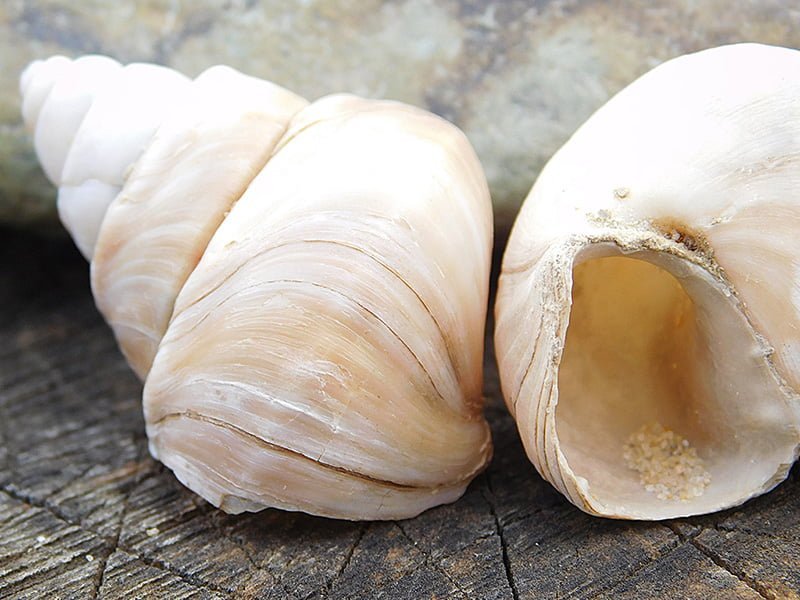Exploring the Enigmatic Neothauma Shell
Shell Dweller Shells
When it comes to the fascinating world of aquatic life, Lake Tanganyika stands out as a true gem. This African Great Lake, nestled between Tanzania, the Democratic Republic of Congo, Burundi, and Zambia, is known for its incredible biodiversity and unique species. Among the many wonders found in its depths, the Neothauma shell hold a special place.
The Mystery of Neothauma Tanganyicense Shells
The Neothauma tanganyicense is a species of freshwater snail endemic to Lake Tanganyika. What makes these shells so intriguing is their peculiar appearance. They are characterized by a distinctive spiral shape, with intricate patterns and ridges adorning their surface.
These shells have captured the attention of scientists and collectors alike due to their rarity and beauty. The patterns on the shells can vary significantly, ranging from dark brown to light beige, with some even displaying hints of purple or green. Each shell is a unique masterpiece, making them highly sought after by collectors around the world.

The Formation Process
The formation of Neothauma shells is an intriguing process that adds to their allure. These shells are formed through a combination of natural factors, including the presence of volcanic minerals and the activity of small organisms.
Volcanic minerals, such as calcium carbonate, play a crucial role in the shell formation process. These minerals dissolve in the lake water, providing the necessary building blocks for the snails to create their protective shells. Over time, layer by layer, the shells take shape and develop their unique patterns.
In addition to volcanic minerals, the shells also owe their distinct appearance to the activity of small organisms called diatoms. These microscopic algae live in the lake and contribute to the shell’s coloration and patterns. As the snails feed on the diatoms, their shells take on the characteristics of the organisms they consume, resulting in the beautiful designs we see today.

A Window into the Past
The presence of Neothauma tanganyicense shells in the fossil record tells a fascinating story about the evolution of Lake Tanganyika. Scientists have used these fossils to study changes in the lake’s water levels, temperature fluctuations, and the impact of geological events on its ecosystem.
By analyzing the shells’ isotopic composition and growth patterns, researchers can reconstruct past environmental conditions and understand how the lake’s inhabitants adapted to these changes. This information is crucial for understanding the long-term effects of climate change and human activities on freshwater ecosystems.
The Significance of Neothauma Tanganyicense Shells
Aside from their aesthetic appeal, Neothauma shells serve a crucial ecological role in Lake Tanganyika. These shells provide habitat and protection for various species of fish and invertebrates. They create intricate microhabitats within the lake, offering refuge and breeding grounds for small organisms. Furthermore, the shells act as natural filters, helping to maintain the water quality in the lake. As the snails feed on organic matter, they contribute to the ecosystem’s balance by removing excess nutrients and preventing algal blooms.
As these snails have a distinctive spiral-shaped shell, which provides both protection and a potential nesting site for the cichlids. The shell dwellers, which include species such as the Neolamprologus multifasciatus, Lamprologus speciosus and Neolamprologus brevis have adapted to live within the empty shells of the snails. The cichlids use the shells as a safe haven from predators and as a place to breed and raise their young. They are highly territorial and will fiercely defend their chosen shell against intruders. The shells also serve as a visual cue for potential mates, with the males often displaying near their chosen shell to attract females. The relationship between the Neothauma tanganyicense and the shell dwellers is a remarkable example of coevolution. Over time, the cichlids have become specialized to live in and around the shells, while the snails have adapted to provide a suitable habitat for the cichlids. This unique shell-dwelling behaviour has also captured the interest of aquarium enthusiasts, who often create artificial habitats in their tanks to mimic the natural environment of Lake Tanganyika. By providing shells as shelter, hobbyists can observe the fascinating behaviours of these cichlids in their own homes.
Conservation Efforts
Due to their popularity among collectors, Neothauma tanganyicense shells face the risk of overexploitation. To preserve the biodiversity of Lake Tanganyika and protect these unique shells, conservation efforts are underway.Local communities, researchers, and conservation organizations are working together to raise awareness about the importance of sustainable practices. Education programs and initiatives aim to promote responsible collecting and discourage illegal trading of these shells.
By supporting these conservation efforts, we can ensure that future generations will continue to marvel at the beauty of Neothauma shells and appreciate the delicate balance of Lake Tanganyika’s ecosystem.
Conclusion
The Neothauma tanganyicense shells from Lake Tanganyika are not only visually stunning but also hold significant ecological value. Their unique patterns and formation process make them a true marvel of nature. By understanding and appreciating these shells, we can contribute to the conservation of Lake Tanganyika and its remarkable biodiversity.



0 Comments